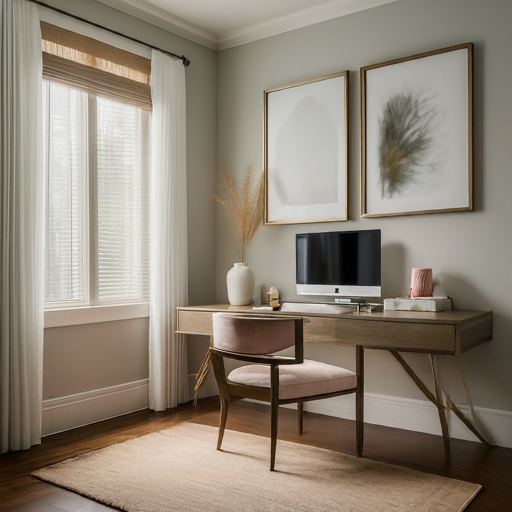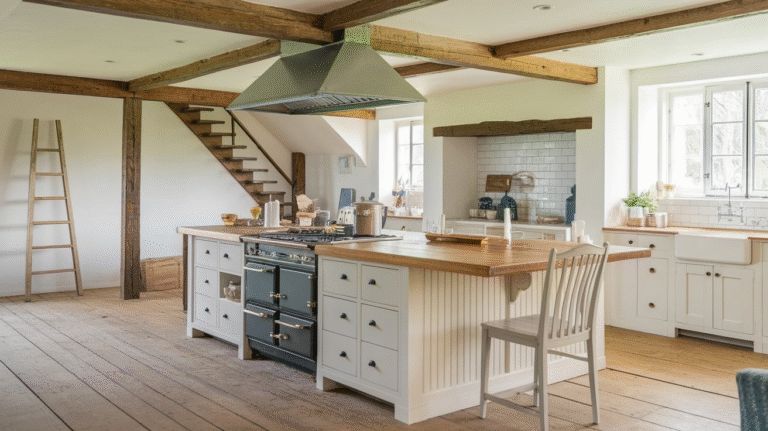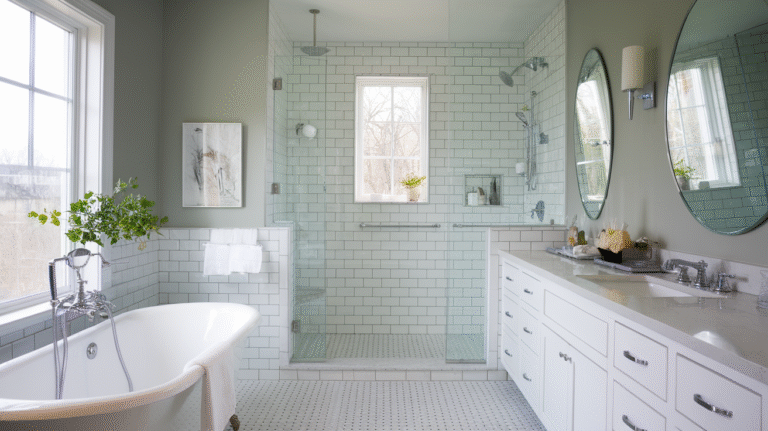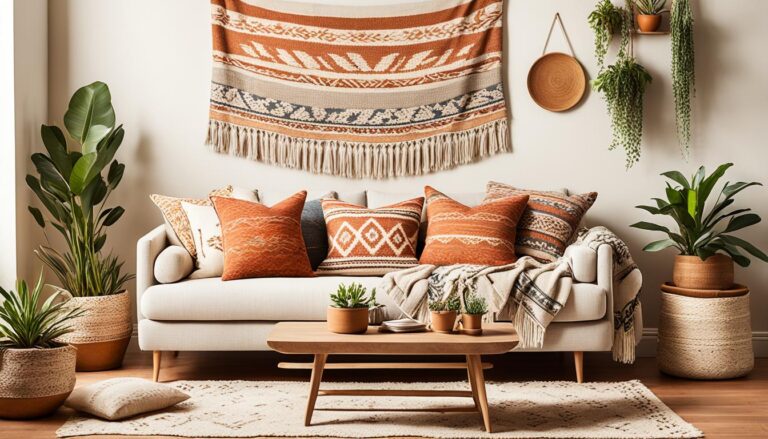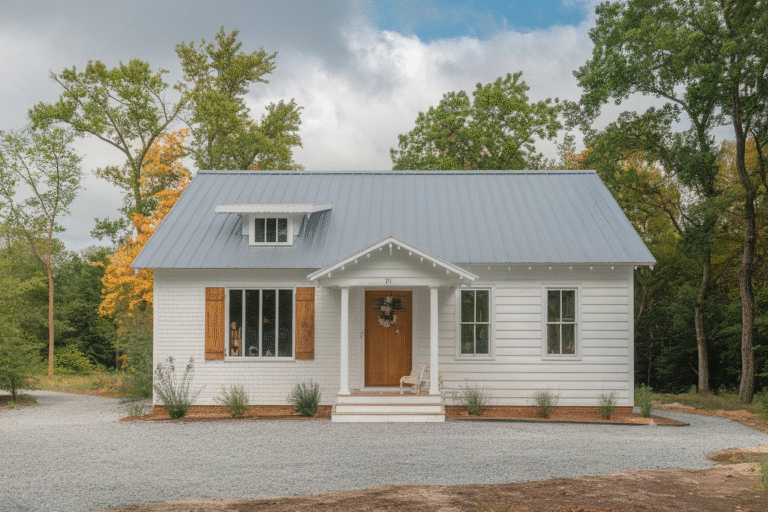Avoid These 20 Kitchen Design Mistakes: Friendly Tips for Your Dream Space

Designing your kitchen can be a daunting task, but knowing what to avoid is just as crucial as knowing what to do.
So, how NOT to design your kitchen? The key is to steer clear of common pitfalls that can turn your dream space into a nightmare, and that’s exactly what we’re here to help you with.
In this article, we’ll share 20 friendly tips that highlight the mistakes you should dodge when creating your culinary haven.
From layout blunders to choosing the wrong materials, these tips will guide you toward a kitchen design that’s both functional and stylish, ensuring your cooking space is a joy to use.
1. Ignoring Your Space: The Size Matters
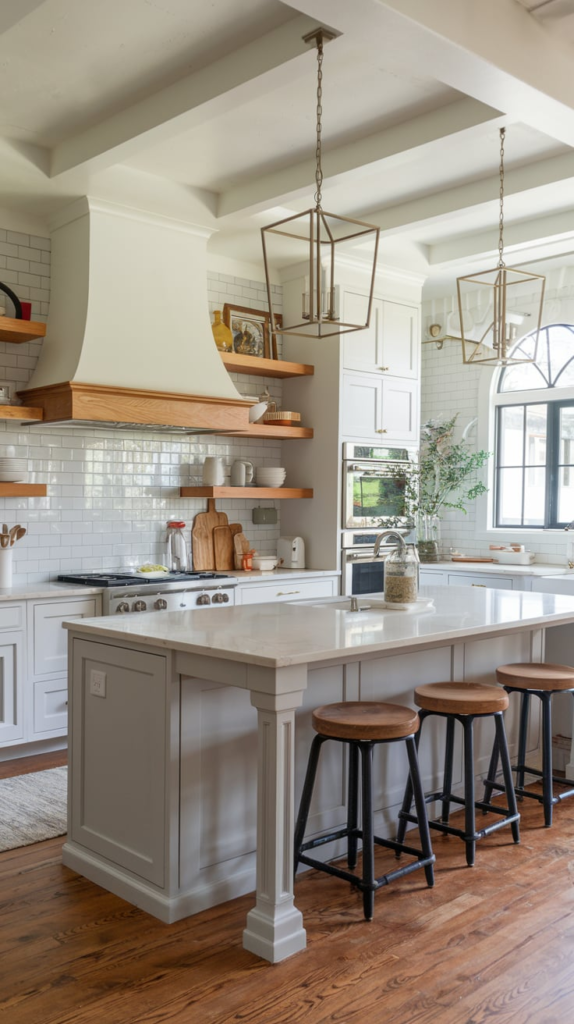
When designing your kitchen, the size of the space plays a huge role. Skipping this step can lead to a cluttered or cramped kitchen. Here’s how to avoid that mistake:
- Measure Everything: Grab a tape measure and jot down the dimensions of your kitchen. Include windows, doors, and any architectural features. Knowing the exact size helps in planning.
- Create a Floor Plan: Sketch a layout that shows where everything will go. Include appliances, cabinets, and counter space. Keep in mind the size of these items.
- Consider Traffic Flow: Allow enough room for people to move around. A good rule of thumb is to leave at least 36 inches of walking space between counters and islands.
- Think About Functionality: The size of your kitchen affects how you cook and entertain. If you love hosting, a larger island or an open layout works better. For a smaller space, consider compact appliances.
- Avoid Overcrowding: Don’t cram too many cabinets or appliances into a small kitchen. This creates a cramped feel and limits movement. Choose a few key pieces that serve multiple purposes.
- Use Vertical Space: In smaller kitchens, take advantage of vertical storage. Install shelves up high to keep countertops clear. This gives the illusion of more space.
- Plan for the Future: Think about your needs in the long run. Will your family grow? Are you planning to entertain more? A flexible design adapts to changes easily.
- Choose Proportional Elements: Large appliances in a tiny kitchen look awkward. Pick sizes that fit your space well. A compact fridge or slim dishwasher can make a big difference.
- Utilize Light Colors: Light colors make a small kitchen feel bigger. White or soft pastels reflect light and create a more open atmosphere.
- Don’t Forget About Storage: Every kitchen needs adequate storage. Plan for cabinets that reach the ceiling in smaller kitchens to maximize space.
Keep these tips in mind to make the most of your kitchen’s size. A well-designed kitchen enhances both style and functionality.
2. Skipping the Workflow: Function Over Form
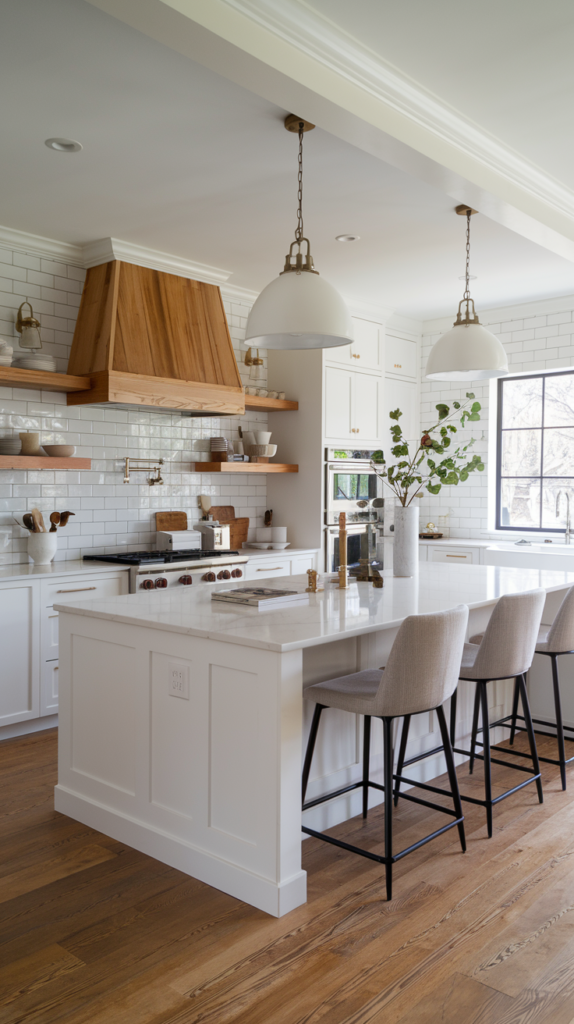
Designing your kitchen is all about the balance between style and functionality. Many people get caught up in aesthetics and forget the importance of workflow. A beautiful kitchen isn’t much good if it’s a hassle to use.
Here’s what to keep in mind:
Key Workflow Zones
- Preparation Zone: This is where you chop, mix, and assemble. Keep your cutting boards, knives, and mixing bowls close to your prep area.
- Cooking Zone: Place your stove, pots, and utensils within easy reach. Consider how often you’ll need to grab spices or oil while cooking.
- Cleaning Zone: Position your sink near the prep and cooking zones. This makes cleaning up easier and keeps the mess contained.
The Kitchen Work Triangle
Think about the classic kitchen work triangle: the fridge, stove, and sink. This layout saves time and energy. Keep these points close enough for convenience but far enough to avoid crowding.
Avoid Clutter
Don’t let too many decorative items clutter your workspace. Stick to a few essentials that add personality without sacrificing function.
Smart Storage Solutions
Invest in clever storage options. Use pull-out shelves, lazy Susans, and drawer dividers. These make accessing your tools and ingredients easy and quick.
Consider Traffic Flow
Plan your kitchen layout for easy movement. Avoid placing the fridge or oven in high-traffic areas. Blocked paths can lead to frustration and accidents.
Lighting Matters
Good lighting enhances both form and function. Use task lighting for prep areas and ambient lighting for overall visibility.
Stay Organized
Regularly declutter and organize your kitchen. A tidy space makes cooking more enjoyable and efficient.
Avoid Trends
Trendy designs may look great but can hinder functionality. Stick to timeless designs that prioritize usability over fleeting aesthetics.
Think About Family
If you frequently cook for family or friends, consider how many people will be in the kitchen at once. Ensure enough space for everyone to move around comfortably.
Remember, the goal is to create a kitchen that looks good and works even better. Prioritize function over form, and your kitchen will be a place you love to spend time in.
3. Choosing Style Over Functionality
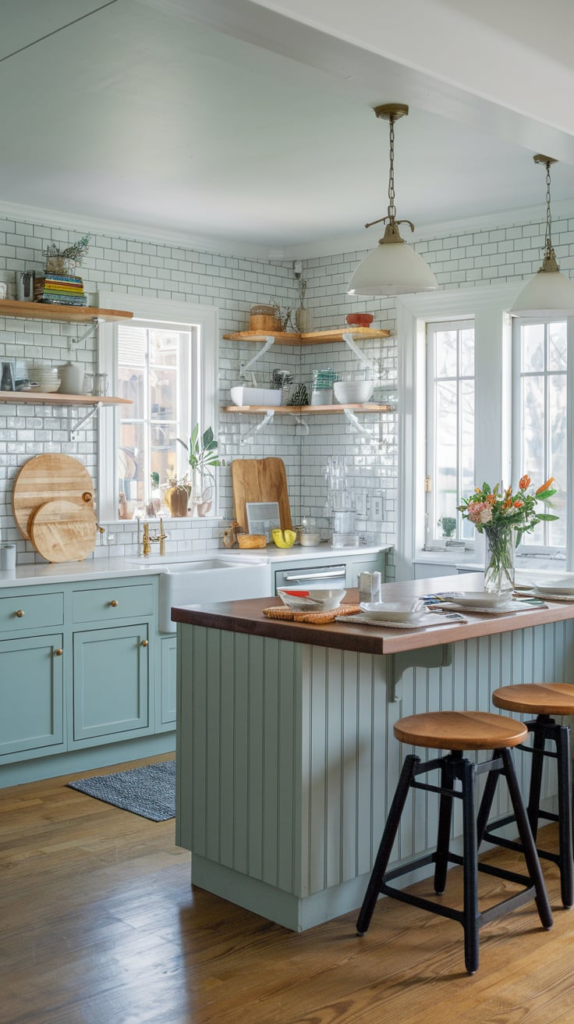
When it comes to kitchen design, striking a balance between style and functionality is key. Many homeowners get caught up in the latest trends, forgetting that a kitchen needs to work for daily life. Here’s what to avoid:
- Ignoring Layout: A beautiful kitchen means nothing if you can’t move around easily. Pay attention to the workflow. The classic work triangle (sink, stove, refrigerator) should remain a priority.
- Fancy Fixtures: Opting for trendy faucets or lighting might look great in a magazine, but if they don’t serve your needs, you’ll regret it. Choose fixtures that fit your cooking habits and maintenance preferences.
- Overloading on Decor: A kitchen full of decorative items can look stunning but makes it hard to keep things tidy. Stick to a few key pieces that enhance the space without cluttering it.
- Ignoring Storage Needs: A stylish kitchen with limited storage will frustrate you. Ensure you have enough cabinets and shelves for your pots, pans, and gadgets. Consider multifunctional furniture for added utility.
- Skimping on Counter Space: Countertops are crucial. You need ample space for food prep, cooking, and serving. Don’t sacrifice functionality for a sleek look.
- Choosing Aesthetic Over Durability: Materials that look good may not withstand daily wear and tear. Select surfaces that combine beauty with practicality, like quartz or granite.
- Neglecting Lighting: While pendant lights can add style, proper task lighting is essential. Include bright, overhead lights for cooking and prep areas to avoid accidents.
- Ignoring Your Lifestyle: If you love to cook, prioritize appliances that make your life easier. High-end looks won’t help if you’re struggling with underperforming equipment.
- Overlooking Ergonomics: Keep your comfort in mind. Choose cabinets and countertops at the right height for you. Uncomfortable workspaces can make cooking a chore.
- Focusing on Trends: Avoid designs that are too trendy. What looks good now may become outdated quickly. Choose timeless elements that will last.
Remember, a kitchen should reflect your style but also serve your needs. Design with both function and flair in mind for a space that’s truly welcoming.
4. Overlooking Lighting: Brighten Up!
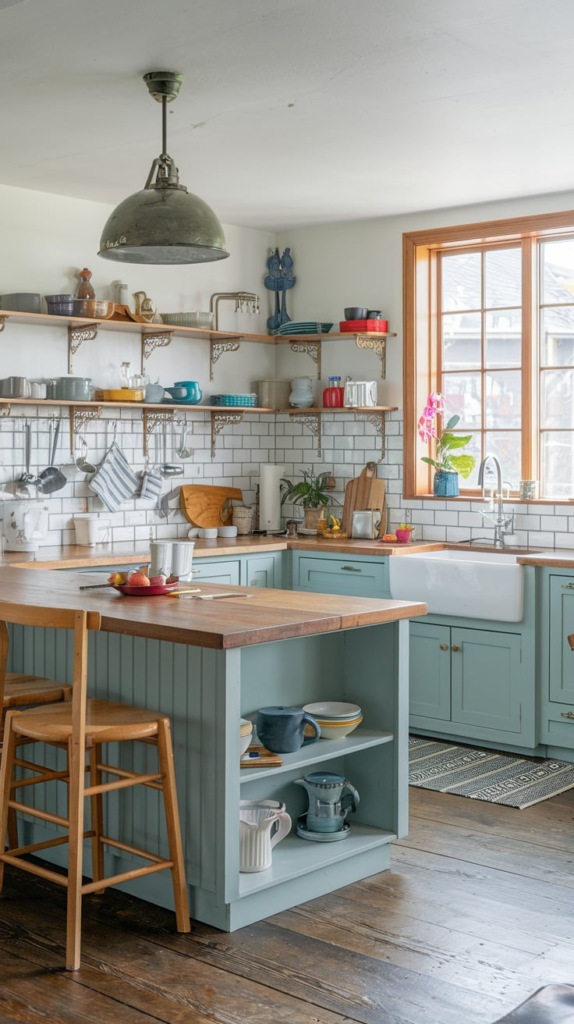
Lighting can make or break your kitchen design. Don’t underestimate its impact. Here’s how to avoid common pitfalls and keep your kitchen bright and inviting.
Layer Your Lighting
Don’t settle for a single overhead light. Use a mix of lighting types to create depth and functionality:
- Ambient Lighting: This is your general light source. Use ceiling fixtures or recessed lights.
- Task Lighting: Focus on areas where you prep food or cook. Under-cabinet lights or pendant lights work well.
- Accent Lighting: Highlight features like artwork or shelves. Use spotlights or LED strips.
Choose the Right Bulbs
Not all bulbs are equal. Consider these options:
- LED Bulbs: Energy-efficient and long-lasting. They come in various color temperatures.
- Warm White (2700K-3000K): Creates a cozy atmosphere, perfect for family gatherings.
- Cool White (3500K-4100K): Ideal for task lighting, providing a bright, clean look.
Pay Attention to Placement
Where you place your lights matters. Follow these tips:
- Over the Sink: Install task lighting above the sink for better visibility.
- Cooking Zones: Ensure your stove and prep areas have adequate lighting.
- Dining Areas: Use softer lighting for dining spaces to create a relaxed vibe.
Don’t Forget Natural Light
Maximize natural light wherever possible. Here’s how:
- Windows: Use sheer curtains to let in light while maintaining privacy.
- Mirrors: Place mirrors strategically to reflect light and make the space feel larger.
- Open Layouts: Consider an open layout to allow light to flow from adjacent rooms.
Avoid Harsh Lighting
Steer clear of overly bright or harsh lights. They can create an unwelcoming atmosphere. Instead, opt for softer, diffused lighting to keep things comfortable.
By paying attention to your kitchen lighting, you can enhance not only the look of your space but also the experience of cooking and gathering. Don’t let poor lighting dim your design dreams!
5. Forgetting About Storage: Cluttered Chaos
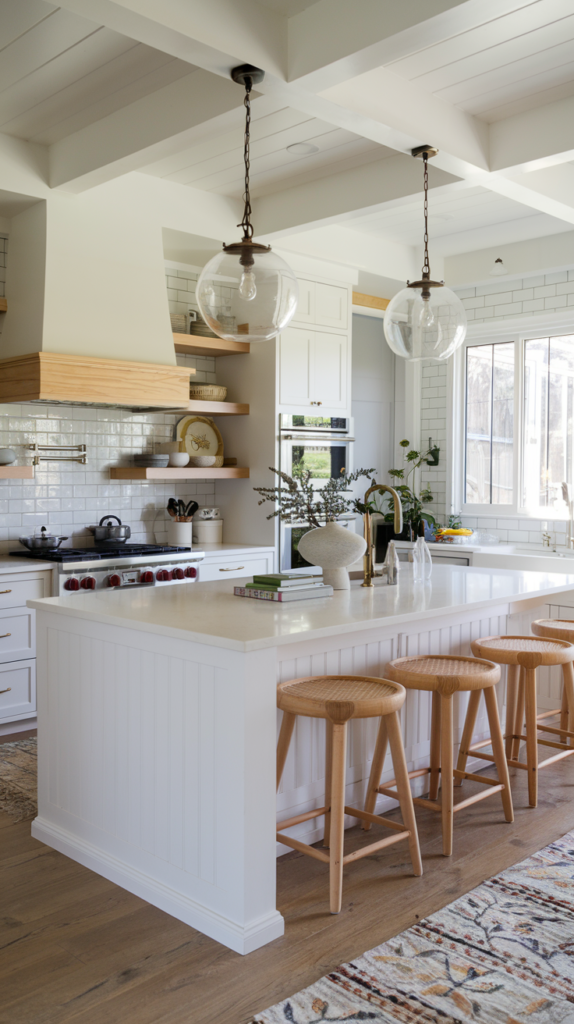
A kitchen without enough storage leads to cluttered chaos. You’ll struggle to find what you need. Cooking becomes a hassle. Keep these tips in mind to avoid a storage disaster.
- Underutilize Cabinet Space: Don’t just stack items randomly. Use vertical space. Add shelf risers to maximize height.
- Neglect Drawers: Drawers can hold a lot. Use dividers to keep utensils organized. Consider deep drawers for pots and pans.
- Overlook the Pantry: A well-organized pantry can save you time. Group similar items together. Use clear containers for easy visibility.
- Ignore Corner Cabinets: Corner cabinets often end up as black holes. Install pull-out shelves to make the most of these tricky spaces.
- Forget About Hooks: Wall hooks can free up counter space. Hang pots, pans, and utensils. It adds a personal touch and keeps essentials within reach.
- Disregard Vertical Storage: Use the walls! Install shelves for cookbooks or decorative items. Consider magnetic strips for knives.
- Skip the Island Storage: An island can do more than provide workspace. Use it for extra storage. Add cabinets or shelves underneath.
- Avoid Multi-Functional Furniture: Look for items that serve more than one purpose. A kitchen cart can hold supplies and act as extra counter space.
- Overstuff Cabinets: Don’t cram too many items into your cabinets. It makes it hard to find what you need. Keep only what you use regularly.
- Neglect Small Appliances: Store large appliances out of sight. Keep only the essentials on the counter. This keeps your workspace tidy.
- Ignore Seasonal Items: Store seasonal items away from everyday essentials. Use bins to keep things organized and easy to access when needed.
- Forget the Backsplash: Use your backsplash for more than looks. Install magnetic strips or small shelves for spices and cooking tools.
- Avoid Clear Labels: Label containers and shelves. It saves time and keeps everything organized.
- Disregard Furniture Style: Choose furniture that complements your storage needs. Open shelves can look great and provide additional space.
- Skip the Planning Stage: Don’t rush into your design. Plan your storage layout before you start. This helps prevent clutter from the get-go.
- Overlook Personal Needs: Consider your cooking habits. Tailor your storage solutions to fit your lifestyle.
By paying attention to storage, you can create a functional and welcoming kitchen.
6. Neglecting Safety Features: Don’t Cut Corners
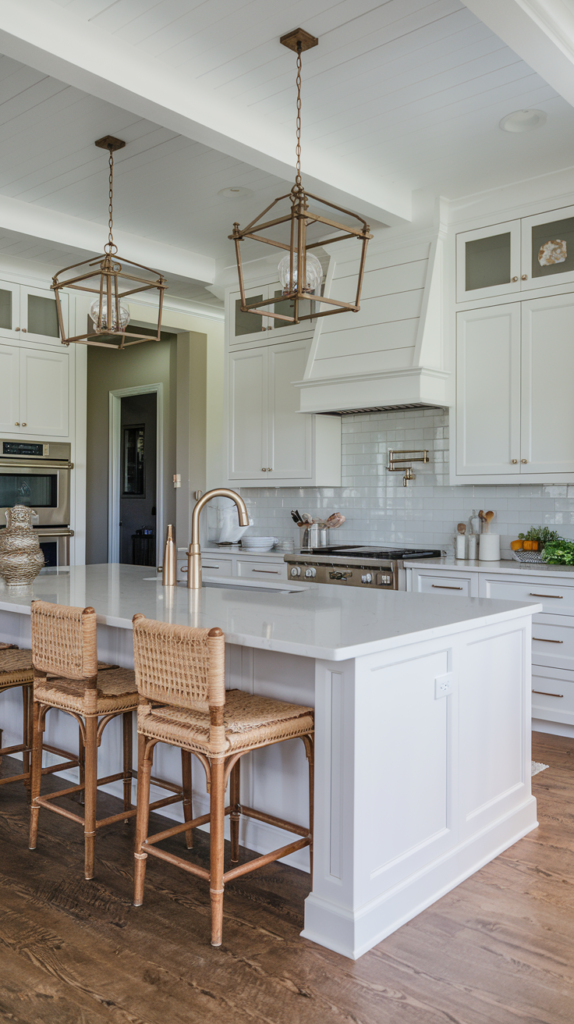
When diving into kitchen design, safety should always top your priority list. Cutting corners here can lead to accidents and injuries, which nobody wants. Here are some essential safety features to consider:
- Proper Ventilation: Install a range hood to effectively remove smoke, steam, and odors. Poor ventilation can lead to a buildup of harmful gases and moisture.
- Slip-Resistant Flooring: Choose materials that provide good traction. Wet floors can turn into a hazard, especially in a busy kitchen.
- Rounded Countertops: Sharp edges on countertops can cause injuries. Opt for rounded or soft edges to minimize the risk.
- Childproofing: If you have little ones around, consider installing safety locks on cabinets and drawers. Keep dangerous tools and cleaning supplies out of reach.
- Fire Extinguisher: Always have a fire extinguisher within reach. A Class K extinguisher is ideal for kitchen fires involving grease and oil.
- Sturdy Cabinetry: Ensure cabinets can handle the weight of pots, pans, and appliances. Weak cabinets can tip over, posing a safety risk.
- Lighting: Good lighting prevents accidents. Install bright, even lighting to ensure all areas of the kitchen are visible.
- Electrical Safety: Use ground fault circuit interrupters (GFCIs) in wet areas to prevent electrical shocks. Avoid overloading outlets with too many appliances.
- Appliance Placement: Keep hot appliances like toasters and microwaves out of reach of children. Position them away from edges to prevent accidental falls.
- Safe Knife Storage: Use knife blocks or magnetic strips to store knives securely. Avoid leaving them loose in drawers where they can cause injuries.
- Easy-to-Reach Fire Exits: Make sure exits are clear and accessible. In case of emergencies, you want to exit the kitchen without obstacles.
- Clear Pathways: Keep the kitchen organized and clutter-free. This allows for safe movement, especially during busy cooking times.
Prioritize these safety features. They not only protect you and your family but also enhance the overall functionality of your kitchen. Don’t let safety take a backseat in your design process.
7. Disregarding Ventilation: Breathe Easy
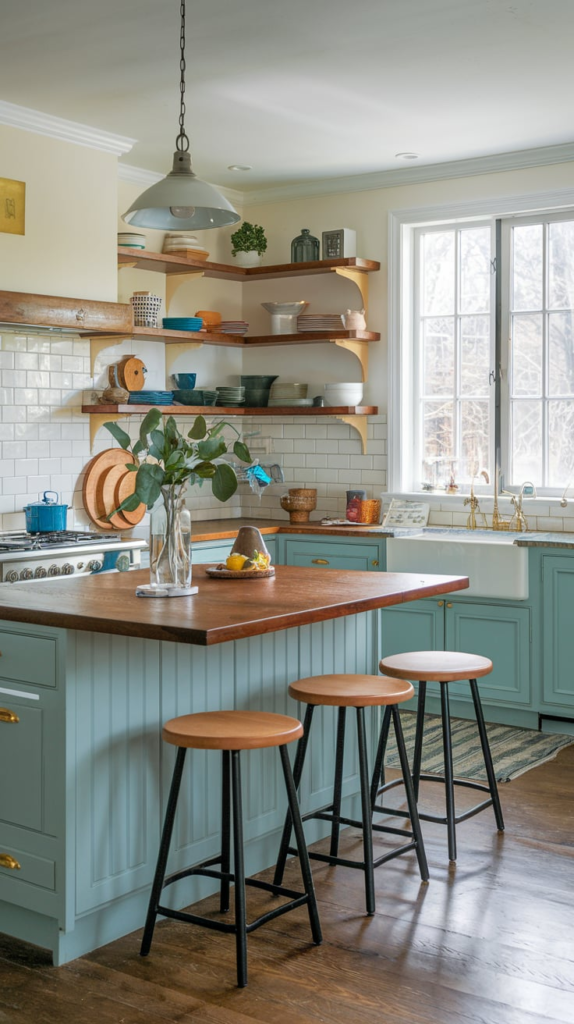
Good ventilation makes a huge difference in your kitchen. You don’t want to cook in a stuffy, smelly space. Proper airflow keeps the air fresh and reduces humidity. Here’s why you shouldn’t overlook ventilation:
- Odor Control: Cooking creates smells. A good ventilation system helps keep your kitchen smelling fresh. No one wants to walk into a home that smells like last night’s dinner.
- Moisture Management: Cooking generates steam. Without proper ventilation, moisture builds up, leading to mold and mildew. Keep your kitchen dry to protect your health and your home.
- Heat Reduction: Cooking can make your kitchen hot. A well-ventilated space helps regulate temperature. It makes cooking more comfortable and keeps your kitchen from becoming a sauna.
Tips for Effective Ventilation
- Install a Range Hood: A range hood above your stove captures smoke and odors. Choose one that fits your cooking style. Consider fan speed and noise levels.
- Window Placement: If possible, design your kitchen with windows that open. Fresh air can flow in while cooking, reducing odors and humidity.
- Use Exhaust Fans: Install exhaust fans in your kitchen. These fans help remove heat and moisture quickly. Turn them on while cooking for the best results.
- Air Circulation: Consider adding ceiling fans. They can help circulate air and keep the kitchen cool.
- Regular Maintenance: Clean your ventilation system regularly. Clogged filters reduce efficiency. Keep your system in top shape for better airflow.
- Consider Ductless Options: If ductwork is a hassle, explore ductless range hoods. They filter air and recirculate it back into the kitchen.
- Open Concept Design: If possible, create an open kitchen layout. This allows air to flow freely between spaces, enhancing ventilation.
Ignoring ventilation can lead to problems down the line. Focus on creating a kitchen that breathes easy. You’ll enjoy cooking more, and your home will feel fresher.
8. Choosing Cheap Materials: Quality Counts
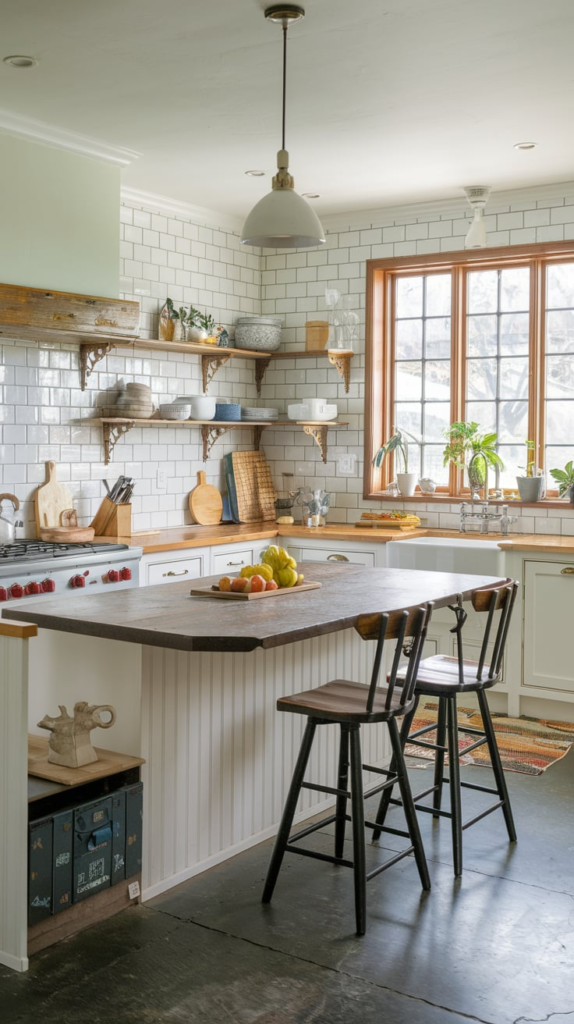
When it comes to kitchen design, opting for cheap materials can lead to regrets down the line. Quality matters. Here’s why you should think twice before going for budget options.
Durability
Cheap materials often don’t hold up well over time. You might save money upfront but end up spending more on repairs or replacements. Consider these common kitchen materials:
- Countertops: Laminates are affordable but can scratch and stain easily. Stone or quartz offers better longevity.
- Cabinets: Particleboard cabinets may look good initially, but they won’t withstand moisture like solid wood or plywood.
- Flooring: Vinyl flooring is inexpensive but can wear out quickly. Tile or hardwood provides better durability.
Maintenance
Low-quality materials usually require more maintenance. You might find yourself cleaning or fixing things more often than you’d like. Here’s a quick comparison:
| Material | Maintenance Level | Lifespan |
|---|---|---|
| Laminate | High | 5-10 years |
| Solid Wood | Moderate | 15-30 years |
| Vinyl | High | 5-10 years |
| Tile | Low | 20+ years |
Aesthetic Appeal
Cheap materials can cheapen the overall look of your kitchen. Quality materials add value and create a welcoming atmosphere. High-end finishes stand out and elevate your home’s appeal.
Long-Term Value
Investing in quality materials increases your home’s resale value. Buyers notice the difference. Here’s a simple breakdown:
- Cheap Materials: Lower resale value, potential for buyer hesitation.
- Quality Materials: Higher resale value, attracts more buyers.
Comfort and Safety
Quality materials often provide better comfort and safety. A sturdy countertop won’t warp or crack. Durable flooring reduces the risk of slips and falls.
In the end, choosing quality over cheap materials pays off. Think about what you want in the long run. A little extra investment now can save you headaches later. Keep your kitchen looking great and feeling comfortable with the right choices.
9. Sticking to Trends: Timeless vs. Trendy
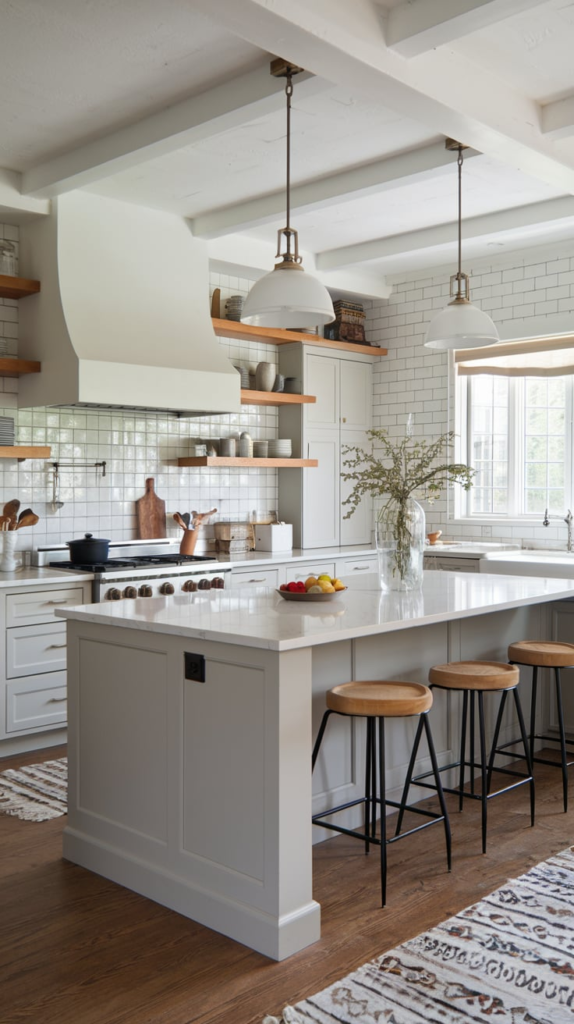
When designing your kitchen, jumping on the latest trends might seem tempting. But trendy designs can quickly feel outdated. Here’s how to balance timeless style with current fads.
Timeless Design Elements
- Classic Colors: White, gray, and beige never go out of style. They create a clean, fresh look.
- Natural Materials: Wood, stone, and metal add warmth and durability that trends often overlook.
- Simple Lines: Avoid overly ornate designs. Clean lines give your kitchen a modern yet classic feel.
Trendy Pitfalls
- Bold Colors: Bright, trendy colors can clash with future tastes. Stick to neutral bases and add pops of color with accessories.
- Overly Complicated Layouts: Open floor plans are popular, but too much openness can lead to chaos. Keep practical layouts for everyday use.
- Fad Features: Elements like chalkboard walls or oversized islands can quickly feel dated. Opt for features that enhance functionality.
How to Blend Timeless with Trendy
- Focus on Functionality: Prioritize how you use your kitchen. Design around your cooking habits, not just aesthetics.
- Choose Trendy Accents: Add trendy elements through paint, decor, or small appliances. This way, you can easily update them.
- Invest in Quality: Choose quality materials that stand the test of time. They keep your kitchen looking fresh longer.
Final Thoughts
Keep the balance between timeless and trendy. Aim for a kitchen that feels current but doesn’t scream “outdated” in a few years. Make wise choices and enjoy a space you love for years to come.
10. Not Considering Your Lifestyle: Make It Work for You
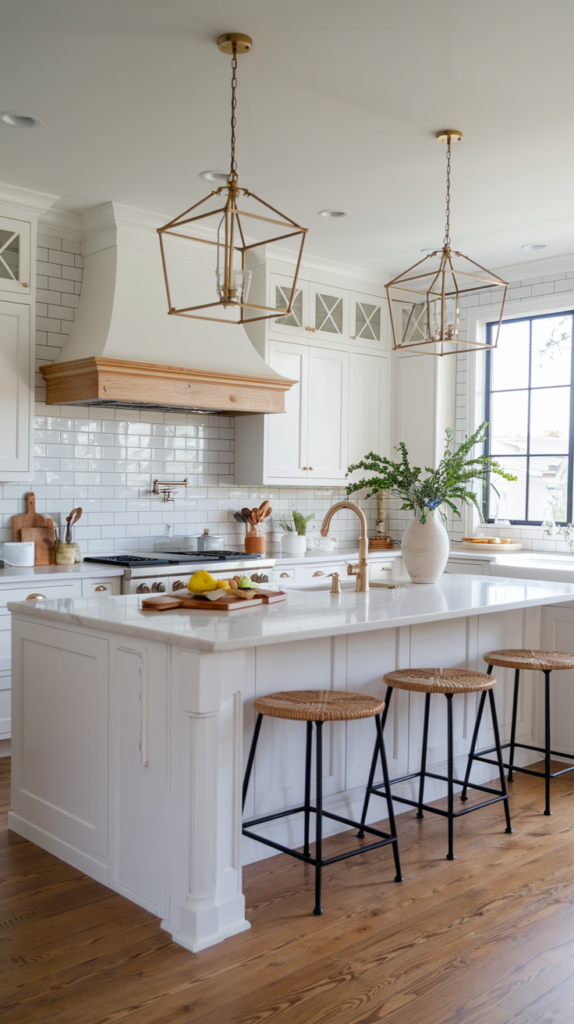
Designing your kitchen without thinking about your lifestyle is a big mistake. Your kitchen should reflect how you cook, entertain, and live. Here are some tips to ensure your kitchen fits your needs:
- Assess Your Cooking Habits
Think about how often you cook. Do you whip up quick meals or enjoy elaborate dinners? If you love cooking, prioritize counter space and storage for gadgets. - Entertaining Space
If you entertain often, create an inviting area. An island with seating can become the perfect spot for friends to gather. Make sure there’s enough room for movement and socializing. - Family Needs
Consider how your family uses the kitchen. Do kids help with meals? Include lower counters or a kid-friendly space to keep them involved. - Daily Routines
Analyze your daily routine. If you grab breakfast on the go, design a nook for quick meals. If you prefer sit-down dinners, ensure your layout supports that. - Storage Solutions
Tailor your storage to your lifestyle. For avid bakers, include deep drawers for mixing bowls. If you have lots of gadgets, install pull-out shelves or cabinets. - Zoning
Create zones for different tasks. Set up a cooking zone with easy access to pots and pans, a prep zone with cutting boards, and a clean-up zone near the sink and dishwasher. - Flexibility
Choose flexible furniture that adapts to your needs. A movable island can provide extra prep space or serve as a buffet during gatherings. - Personal Style
Your kitchen should reflect your personal style. Choose colors, materials, and finishes that make you happy. This space should feel like home. - Future Considerations
Think ahead. If you plan to expand your family or host more guests, design your kitchen to accommodate those changes. - Seek Professional Advice
Don’t hesitate to ask for help. A kitchen designer can provide insights tailored to your lifestyle, ensuring your kitchen works for you.
Remember, your kitchen is the heart of your home. Design it to suit your lifestyle, and you’ll enjoy it much more.
11. Overcomplicating Appliances: Keep It Simple
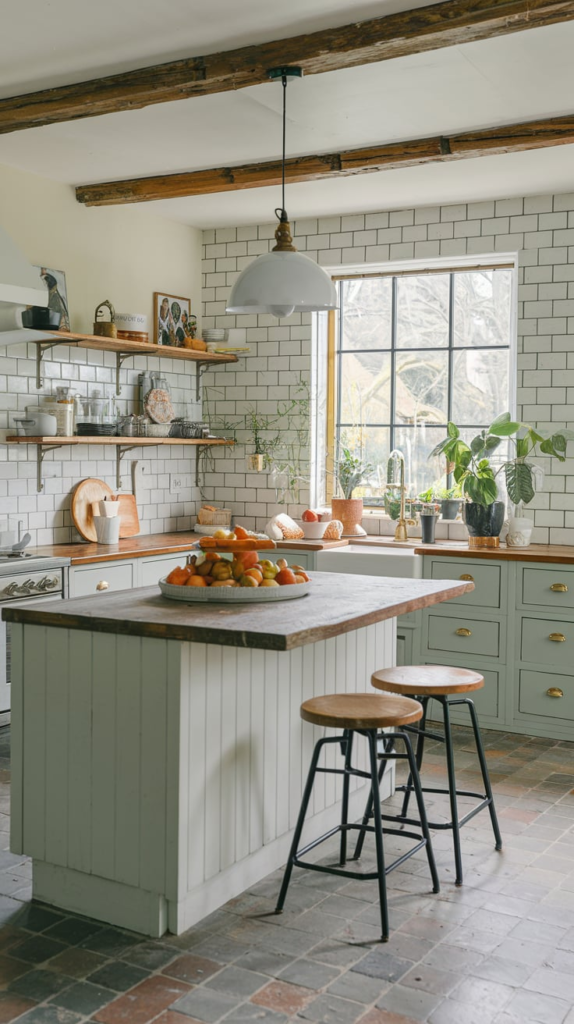
When designing your kitchen, simplicity is key. Overcomplicating your appliance choices can lead to frustration and chaos. Here’s how to keep it simple:
- Choose Multi-functional Appliances: Look for appliances that serve multiple purposes. A toaster oven can bake, toast, and broil. This saves space and reduces clutter.
- Avoid Tech Overload: While smart appliances offer cool features, they can be overwhelming. Stick to basic models that are easy to use. You don’t need a fridge that connects to your Wi-Fi.
- Limit Specialized Gadgets: Resist the urge to buy every gadget on the market. A few high-quality tools are better than a drawer full of rarely used items. Focus on essentials like a good blender or a reliable coffee maker.
- Prioritize User-Friendly Design: Select appliances that are intuitive and easy to operate. Complicated interfaces can lead to confusion. Look for clear buttons and straightforward controls.
- Think About Maintenance: Some high-tech appliances require special cleaning or maintenance. Choose models that are easy to care for. Stainless steel is usually a good choice for its durability and ease of cleaning.
- Size Matters: Ensure appliances fit your kitchen space. Oversized appliances can dominate your kitchen and make it feel cramped. Measure your space and choose accordingly.
- Stick with Trusted Brands: Opt for brands known for reliability and customer service. A well-reviewed appliance can save you headaches down the road.
- Avoid Trends: Trendy appliances may look great, but they can quickly become outdated. Choose classic styles that stand the test of time.
- Plan for Energy Efficiency: Look for energy-efficient models. Not only do they save you money on bills, but they also reduce environmental impact.
- Consider Your Cooking Habits: Think about how you cook. If you rarely bake, don’t waste space on a large oven. Tailor your appliance selection to your actual needs.
- Test Before You Buy: If possible, try out appliances before making a purchase. This ensures they feel right for you.
Keep your kitchen functional and enjoyable. Simple choices lead to a smoother cooking experience.
12. Failing to Plan for Future Needs: Think Ahead
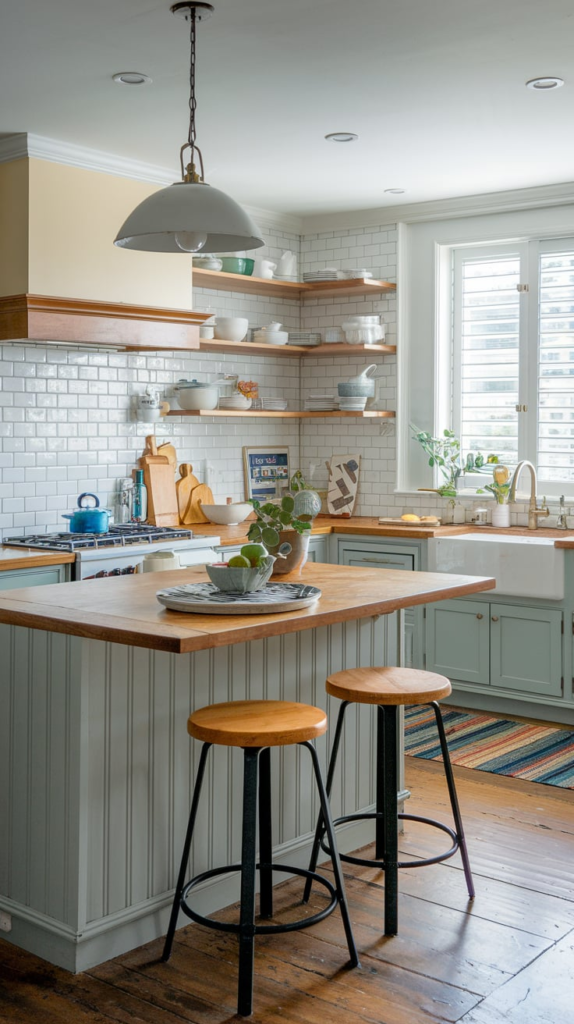
When designing your kitchen, it’s easy to focus on the now. You want a space that looks good today, but what about tomorrow? Failing to consider future needs can lead to regrets down the line. Here’s how to think ahead:
- Consider Your Lifestyle Changes
- Are you planning to start a family?
- Will you be entertaining more guests?
- Do you foresee any aging relatives moving in?
- Think About Upgrades
- Include space for larger appliances if you might upgrade.
- Plan for additional storage for growing needs.
- Consider easy access to cabinets and counters for all ages.
- Flexibility is Key
- Use modular or movable furniture. This allows you to reconfigure your space as needed.
- Choose fixtures that can adapt. A pull-out shelf can serve various functions over time.
- Invest in Quality
- Buy durable materials that withstand wear and tear.
- Choose timeless designs that won’t go out of style.
- Stay Open to Technology
- Integrate smart home features that can be updated easily.
- Plan for charging stations or smart appliances.
- Custom Solutions
- Custom cabinets can be designed to grow with your needs.
- Consider built-in solutions for future kitchen gadgets.
- Think About Accessibility
- Plan for wider walkways and clearances.
- Include lower countertops or pull-out drawers for easier access.
- Budget for Changes
- Set aside funds for future renovations.
- Keep in mind the costs of adding features later on.
- Consult Professionals
- Get advice from kitchen designers who understand trends and longevity.
- A professional can help you envision changes over the years.
- Visualize the Future
- Create a mood board that includes potential future styles.
- Sketch out layouts that work today but can evolve.
Planning for future needs helps you avoid the hassle of major renovations later. A little foresight makes a big difference.
Conclusion
Designing your kitchen should be a fun and exciting process. Avoiding common pitfalls can save you time, money, and frustration. Keep the tips in mind to create a space that reflects your style and meets your needs. Remember to prioritize functionality, flow, and personal touches to make your kitchen truly yours.
Embrace creativity while steering clear of design traps. The right choices will enhance your cooking experience and make your kitchen a welcoming space for family and friends. With a little thought and care, you can achieve a kitchen that you love. Happy designing!

